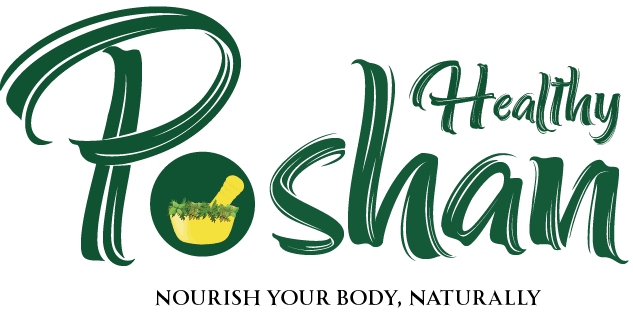When it comes to one-stop eating, nutrient dense foods give the most value. Planning meals and using nutrition strategies can be aided by being aware of the highest value foods. Discover which foods made the cut.

It makes sense to spend your calorie budget wisely by selecting the foods that carry the largest number and variety of nutrients in order to maximize the amount of nutrients you take in.
These are some of the nutrient dense foods:
Salmon
Not all fish are made the same. The most omega-3 fatty acids are found in salmon and other fatty fish. Omega-3 fatty acids are crucial for your body to function at its best. They have a positive impact on wellbeing and reduce the risk of many major illnesses.

Although salmon is mostly valued for its healthy fatty acid composition, it also contains enormous amounts of other nutrients. Wild Atlantic salmon provides 100 grams of high-quality protein, a lot of vitamins and minerals, and roughly 2.2 grams of omega-3s.
According to studies, those who frequently consume fatty fish had a lower risk of developing heart disease, dementia, depression, and a host of other prevalent medical issues. Salmon is tasty and relatively easy to prepare. Additionally, it usually gives you a feeling of fullness with only a few calories.
If at all possible, select wild salmon over farmed. It is healthier, more nutrient-dense, and less likely to be contaminated. It also has a better omega-6 to omega-3 ratio.
Garlic
It’s true that garlic is a wonderful ingredient. It is incredibly nutritious and can make any plain food wonderful. It contains significant amounts of calcium, potassium, copper, manganese, vitamin C, vitamin B1, and vitamin B6. Additionally, it has a lot of healthy Sulphur compounds, such allicin.

Allicin and garlic may lower blood pressure as well as total and LDL (bad) cholesterol, according to numerous studies. Additionally, it assists in increasing HDL (good) cholesterol, which may lower the risk of heart disease.
Additionally, garlic has a number of anti-cancer effects. According to some older research, persons who consume a lot of garlic may have a much lower chance of developing a number of common malignancies, including colon and stomach cancers. Significant antibacterial and antifungal activities are also present in raw garlic.
Kale
Kale is the king of the leafy greens. It is packed with antioxidants, fibre, vitamins, minerals, and different bioactive substances.
Vitamin C, vitamin A, and vitamin K1 are particularly abundant in kale. Potassium, calcium, magnesium, copper, manganese, vitamin B6, and other minerals are also present in significant concentrations. Only 9 calories are in one cup.

Even more healthful than spinach, kale may be. Both are extremely nutrient-dense, but kale has a lower concentration of oxalates, which can bind to minerals like calcium in the intestine and hinder their absorption.
Various bioactive substances, such as isothiocyanates and indole-3-carbinol, which have been demonstrated to inhibit the growth of cancer cells in test-tube and animal experiments, are also abundant in kale and other green vegetables.
Shellfish
Sea creatures in general contain a lot of nutrients, but shellfish may be the most so. The shellfish species that are most frequently eaten are mussels, clams, oysters, and scallops.

Seafood Brassiere are popular in Paris.
Clams are one of the greatest sources of vitamin B12 currently available, providing more than 16 times the RDI in just 100 grams. They are also rich in iron, potassium, selenium, vitamin C, and numerous B vitamins.
In addition, oysters are incredibly nourishing. 100 grams include a significant amount of vitamin B12, vitamin D, and other nutrients, as well as 600% of the RDI for zinc, 200% of the RDI for copper, and other nutrients. Despite being one of the most nutrient-dense meals on the planet, most people rarely eat shellfish.
Potatoes
Potassium, magnesium, iron, copper, and manganese are all abundant in potatoes. C and the majority of the B vitamins are also present. They have a small amount of practically every nutrient you require. There are stories of humans subsisting for extended periods of time solely on potatoes.

One of the foods that is most filling is potatoes. Boiling potatoes fared better than any other food when researchers examined the satiety values of several foods.
Sardines
Small, oily fish called sardines can be consumed whole. Sardines are available online.

It is not unexpected that whole sardines are particularly nourishing given that an animal’s organs are typically the sections of the animal that are the most nutrient-dense.They have trace amounts of practically all the nutrients your body needs.
They contain large amounts of heart-healthy omega-3 fatty acids, just like other fatty fish. After cooking, potatoes also produce resistant starch, a fiber-like material with numerous potent health advantages, if you let them cool.
The conclusion
The most obvious solution is to take dietary supplements if you wish to consume a lot of nutrients without consuming many calories. But a balanced diet cannot really be replaced by supplements. Filling your meals with nutrient-dense foods is a better method to ensure that you obtain all the nutrients you require.
Foods that are high in nutrients are high in nutrients compared to their calorie level. These include a variety of wholesome foods such fresh fruits and vegetables, chocolate, shellfish, eggs, and liver. To benefit from the foods mentioned above, start including them in your diet right away.
